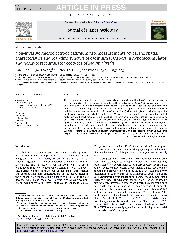摘要
This study aims to determine the spatial characteristics and real-time kinetics of cadmium transport in hyperaccumulator (HE) and nonhyperaccumulator (NHE) ecotypes of Sedum alfredii using a non-invasive Cd-selective microelectrode. Compared with the NHE S. alfredii, the HE S. alfredii showed a higher Cd influx in the root apical region and root hair cells, as well as a significantly higher Cd efflux in the leaf petiole after root pre-treatment with cadmium chloride (CdCl2). Thus, HE S. alfredii has a higher capability for the translocation of absorbed Cd to the shoot. Moreover, the mesophyll tissues, isolated mesophyll protoplasts, and intact vacuoles from HE S. alfredii exhibited an instantaneous influx of Cd in response to CdCl2 treatment with mean rates that are markedly higher than those from NHE S. alfredii. Therefore, the hyper-accumulating trait of HE S. alfredii is characterized by the rapid Cd uptake in specific root regions, including the apical region and root hair cells, as well as by the rapid root-to-shoot translocation and the highly efficient Cd-permeable transport system in the plasma membrane and mesophyll cell tonoplast. We suggest that the non-invasive Cd-selective microelectrode is an excellent method with a high degree of spatial resolution for the study of Cd transport at the tissue, cellular, and sub-cellular levels in plants.
- 出版日期2013-2-15
- 单位浙江大学
